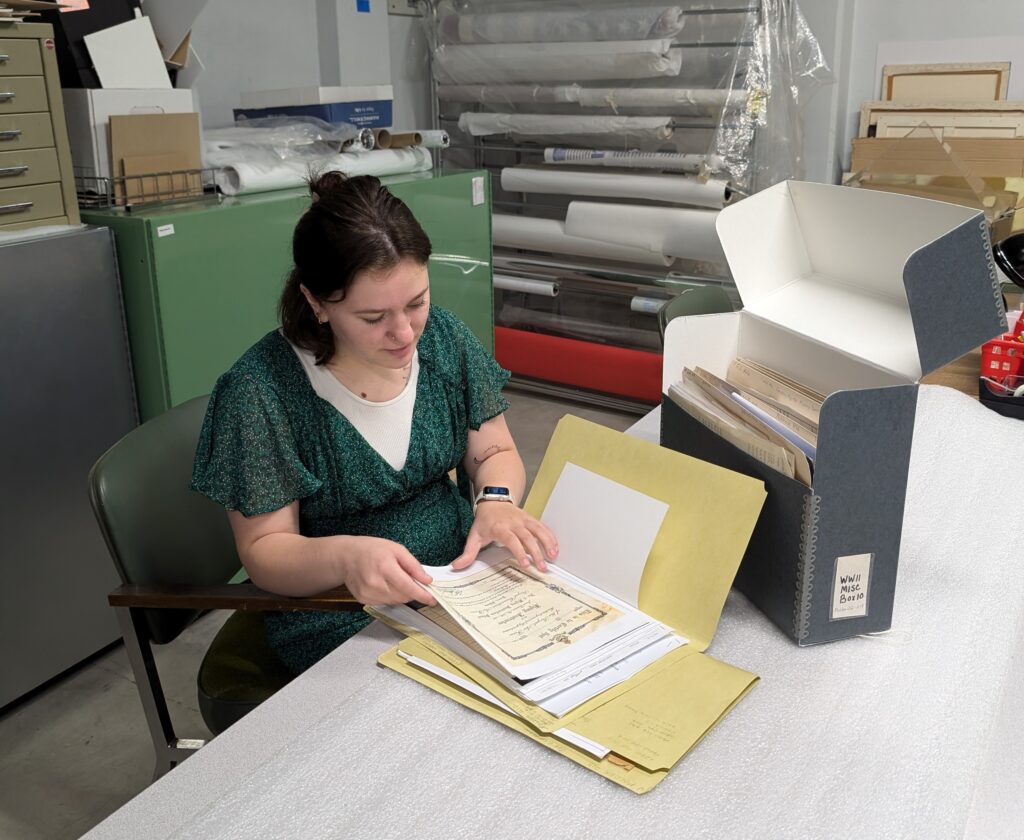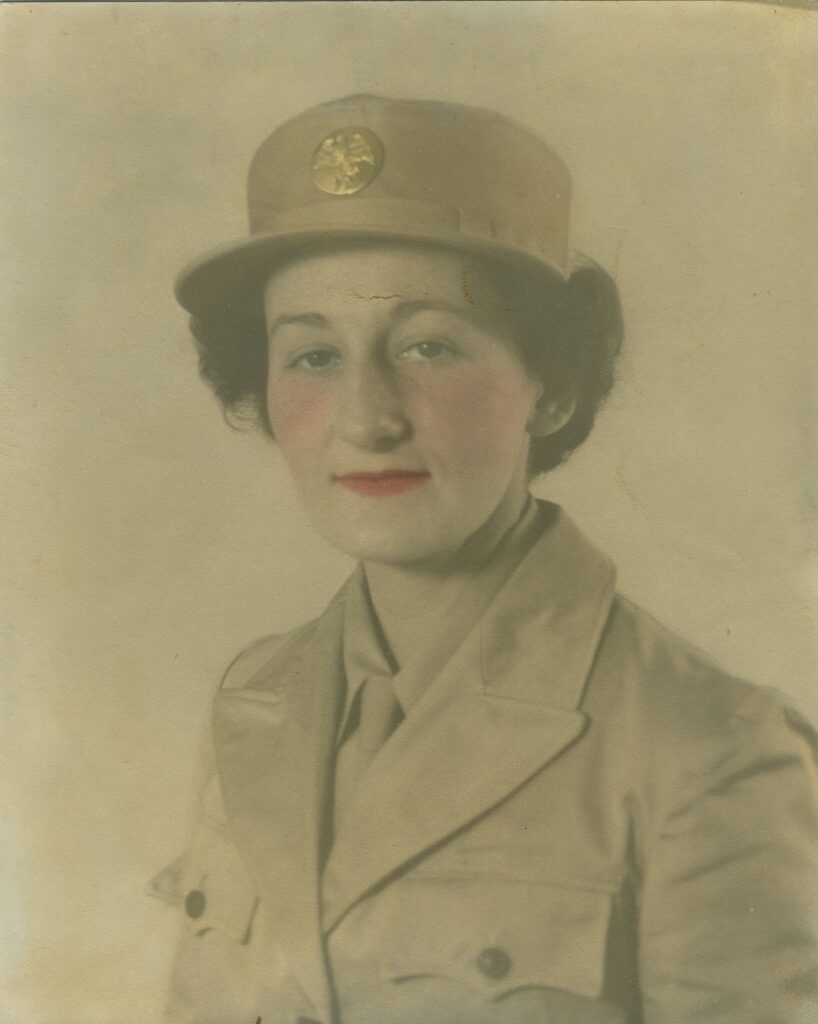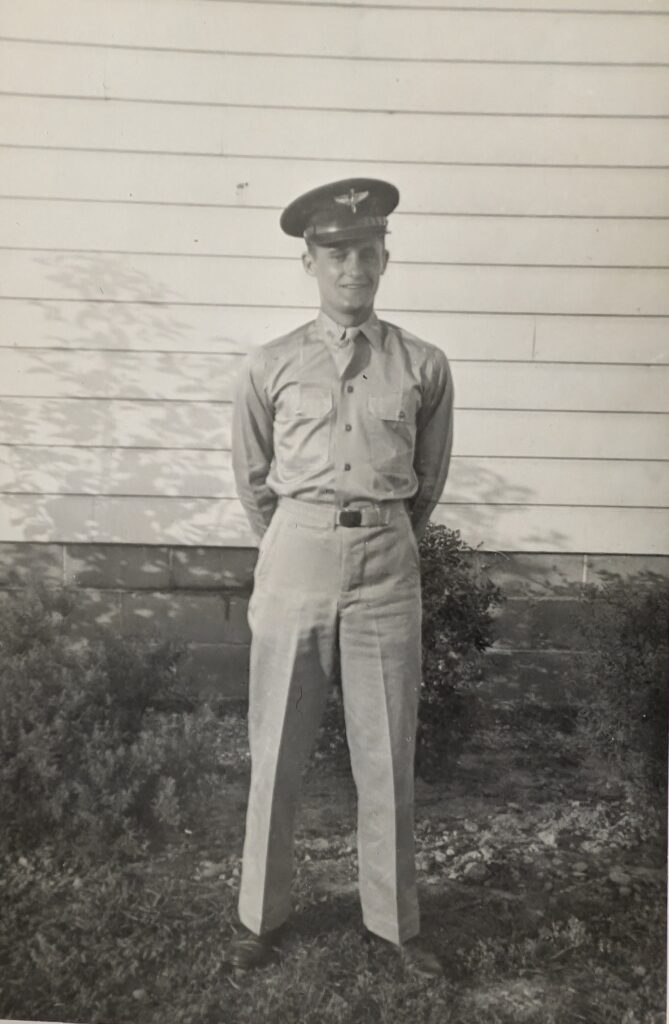
Special guest post written by UMD intern Ava Carlson
Hello there! My name is Ava Carlson and I am interning here at the Richard I. Bong Veterans Historical Center for the summer. This fall will be my final year studying at University of Minnesota Duluth for I will be graduating in the spring of 2025 with a Bachelor’s degree in Public History and a certificate in Museum Studies.
My first project was to create a Finding Aid for an archival collection of documents related to the service of Leona and William McSorley, a pair of siblings who served during World War II. Let’s find out more about them shall we?
Leona McSorley was born March 4, 1915, in Eau Claire, WI. She attended St. Patrick’s High School in Eau Claire and graduated in 1933. After high school she pursued higher education at Eau Claire State Teachers College, where she completed one year. She enlisted in the Women’s Army Corps, WAC, in December of 1942. In January of 1943 she reported to Chicago, IL, where she was assigned to train at the Second WAAC Training Center in Daytona Beach, FL. She spent six weeks at administration training as well as basic and then reported to Camp Polk, LA, to train for overseas duty. In August of 1943 she was sent to Fort Devens, MA, where she departed the U.S. on the S.S. John Erikson on September 5. The vessel was disabled and delayed their arrival in England. Another vessel picked up the crew and they arrived successfully in England on September 18. Once landed in England, Leona and the other members of service received the American Theater Ribbon for the exploit. She was a part of the 2nd WAC Separate Battalion serving in the Headquarters of the European Theater of Operations where she did clerical work. In January of 1944 the WAC were becoming more involved in the planning of the European invasion. The WACs were assigned to run the camp and fulfill housekeeping duties. Leona’s duties at this time changed from clerical work to cooking. She became First Cook for a mess of 900 women, and she had a supervising role in which she supervised 4 to 6 other cooks. On May 8, 1944, she was promoted from Corporal to Technician 5th Grade, Tec 5. She was relocated to France in the beginning of August 1944, and she would remain there until spring of 1945 where she would then be moved to Frankfurt, Germany. In August 1945, she was moved a final time overseas to Compiegne, France where she would depart on the Queen Mary enroute to the United States. She landed in New York on September 10, 1945, but was quickly relocated to Fort Sheridan, IL on September 14, 1945. Once at Fort Sheridan, she was officially Separated. Her service earned her the American Theater Ribbon, the European-African-Middle Eastern Theater Ribbon, the WAAC Service Ribbon, the Good Conduct Medal, and a Meritorious Unit Award GD 190 HQ US FET 1945.
After her service she got married to Silas Johnson. They lived together in Chippewa Falls, WI until Silas passed away in 1981. Leona passed away surrounded by family on August 30, 1999.

William David “Dave” McSorley Jr., was born on August 3, 1921, in Eau Claire, WI. He attended and graduated from St. Patrick’s High School in 1939. He then pursued higher education at Eau Claire Vocational School for business. He registered for service on February 14, 1942. In October of 1942 he joined the Army Air-Corps after receiving orders for Active Duty. From there he was ordered to Maxwell Field, AL, for 8 weeks to receive Pre-Flight training. Once he completed Pre-Flight training, he was moved to Tuscaloosa, AL, for Primary training for another 8 weeks. David was moved to Army Airfield, AAF, Pilot School in Greenville, MS, for eight weeks of basic level training. Once he finished at AAF (Basic), he was transferred to AAF Pilot School (Advanced Single Engine), at Craig Field Air Force Base in Selma, Alabama where he stayed for 8 weeks. He completed training there in August of 1943 and became a Flying Officer of the Air Corps. He then started to pursue becoming a flight central instructor at Randolph Field, Texas for 4 weeks. Once that was completed, he was transferred to Bryan, Texas, and there he trained to become an instrument instructor for another 4 weeks. For his fist 2 months of service, he was a Private for Basic Training 521. Then he was promoted to A/C for 8 months as Aircrew Training 629. For the next 20 months he was 2nd Lieutenant in two positions, Single Engine Pilot 1054 and Single Engine Pilot Instructor 1054-5. He was promoted again to 1st Lieutenant as a Single Engine Pilot Instructor 1054-5 and Assistant Exchange Officer 1054-9 for 5 ½ months. On November 18, 1945, he was Separated at AAF Separation Base Truax Field, Madison, WI. After World War II he continued being a Small Engine Pilot Instructor until 1969 when he retired. In that time after the war, he was promoted several times from 1st Lieutenant to Lieutenant Colonel. He earned his silver wings when he was promoted to 2nd Lieutenant.
In November in 1943, he married Agnes “Shirley” Newman. They were together until 2000 when Shirley passed away. Together they had seven children named Jon, William David III, Karen, Margaret, Melinda, Theresa, and Paul. William passed away on March 22, 2015.

Creating finding aids for archival collections gives information about what kind of information is related to the collection and makes them much more accessible to researchers. This project/experience was a great introduction to the world of collections. When I finished going through the McSorley’s collection, I truly felt like I knew who they were, both in their service and as individuals. And I would have to say that was my favorite part of the project.